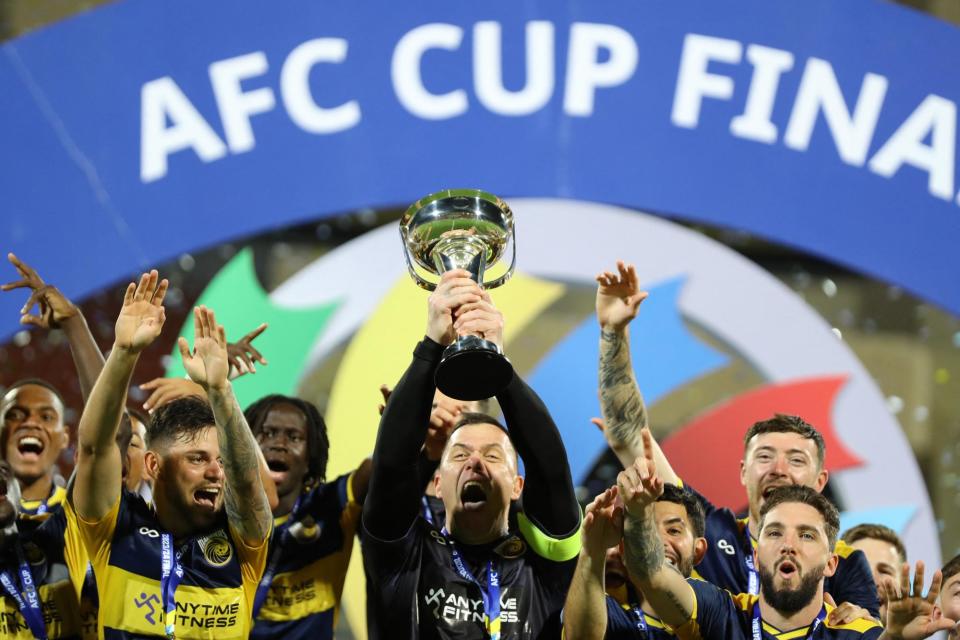Revamped Asian Champions League offers A-League clubs a $100m opportunity

Ten years ago – the last time Central Coast Mariners played in the Asian Champions League – then owner Mike Charlesworth was forced to deny reports that his club were looking to withdraw, such was the financial strain of participating in a competition that offered such paltry monetary rewards.
Also a decade ago, Western Sydney Wanderers secured the ACL title in what remains one of the most remarkable achievements in the history of Australian sport.
Those two examples neatly encapsulate Australia’s love-hate relationship with Asia’s premier club competition. Ever since Australian clubs first entered back in 2007, the idea of playing in the competition has been embraced more than the reality.
Related: A-League expansion delayed as Canberra ruled out of men’s 2024-25 season
Be it the long-haul travel, the often empty stadiums, general lack of success or limited financial reward, the competition has failed to ignite on these shores as was hoped when Australia joined the Asian Football Confederation in 2006.
Dwindling fortunes on the continent ever since the Wanderers’ miracle in Riyadh has seen the ACL, which has recently been re-branded and will now be known as the AFC Champions League Elite, drift from the conscience of Australian football fans.
While the clubs were on board with the prestige of playing in Asia, it never married up with financial compensation for doing so, often coming at a cost to A-League clubs at a time of increased belt-tightening across the competition.
As the league and its clubs face further austerity measures, with club distributions reportedly set to be as low as $500,000 for the coming season, there has never been a greater need for alternative revenue streams.
It is here the newly minted AFC Champions League Elite offers A-League clubs a $100m opportunity.
Ten years ago the Mariners went cap in hand to head office, which at the time was Football Australia, looking for financial assistance to help cover the bill of playing in Japan, Korea and China. This year, they’ll receive $1.2m just for showing up; a far cry from the amounts they received in the past.
That will only grow depending on how they fare in the tournament. In the new streamlined competition, featuring just 24 teams (down from 40), gone is the traditional group stage, replaced by what is known as the “Swiss model”, where 12 teams from each of the East and West Zones are grouped together to play eight group games – four at home, four away – with the top eight from each side advancing to the round of 16.
If the Mariners can get that far, their pay packet will rise to roughly $1.5m. Go another step further to the quarter-finals and they’ll bank more than $2m.
Considering the Mariners took home $2.3m just a few months back for winning the AFC Cup, Asian club competitions have become a nice little earner for the club at just the right time.
The real opportunity, naturally, comes from winning the competition. While that has looked increasingly unlikely for A-League clubs in recent years, given the struggle to often even get out of the group stage, the 10-year anniversary of the Wanderers’ success is a reminder that nothing is impossible.
Expectations may be that Saudi Arabian clubs will dominate the competition, but the same was said of Chinese clubs a decade ago, and yet the star-studded Guangzhou Evergrande, coached by World Cup winner Marcello Lippi, was no match for Tony Popovic’s band of A-League misfits.
The prize for winning the ACL Elite has ballooned from roughly $6m to $18m, enough to fund most A-League clubs for an entire season.
Related: ‘Robbed tonight by a bad referee’: Harry Kewell’s ACL dream crushed
But the real prize comes further down the line. Fifa has made an expanded Club World Cup – to be played every four years and featuring 32 of the best club teams from around the world – one of its signature developments, much to the chagrin of the leagues and players in Europe, who are taking Fifa to court over their plans.
That aside, the new competition offers Asian clubs four places, which are awarded to the winners of the AFC Champions League Elite from the four years prior.
Playing in the Club World Cup, which will be hosted by the US next year and is on the radar of Football Australia for 2029, will reportedly come with an appearance fee of an eye-watering $81m.
Such cash rewards are unheard of, not just for Australian football, but Australian sport. It is a transformative amount of money, but this is the opportunity that exists from playing in a global playground such as football, an opportunity not afforded to most other sports in Australia.
The only question is, as Australian football contracts and narrows its focus, can it dare to dream of such a scenario?

